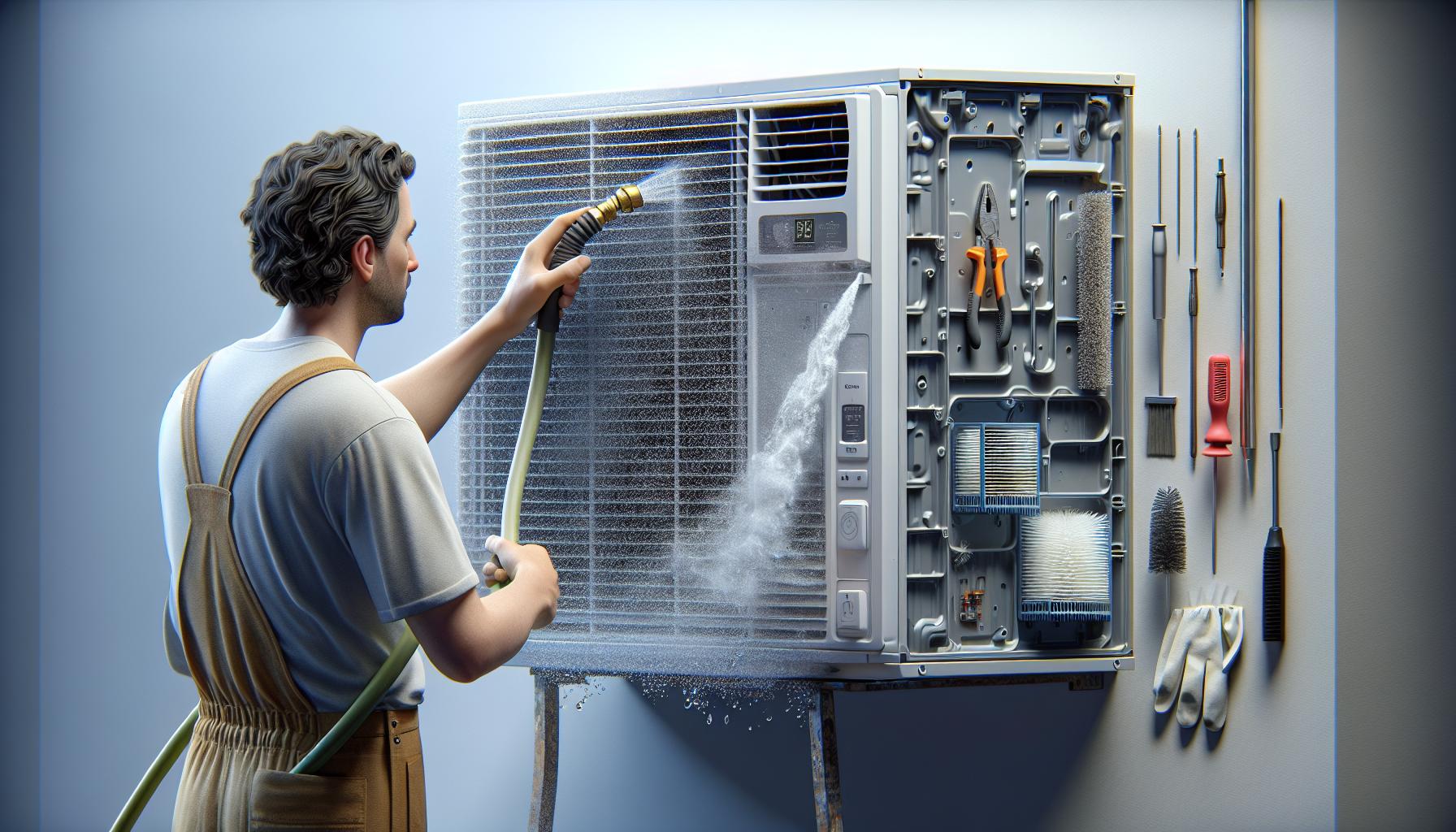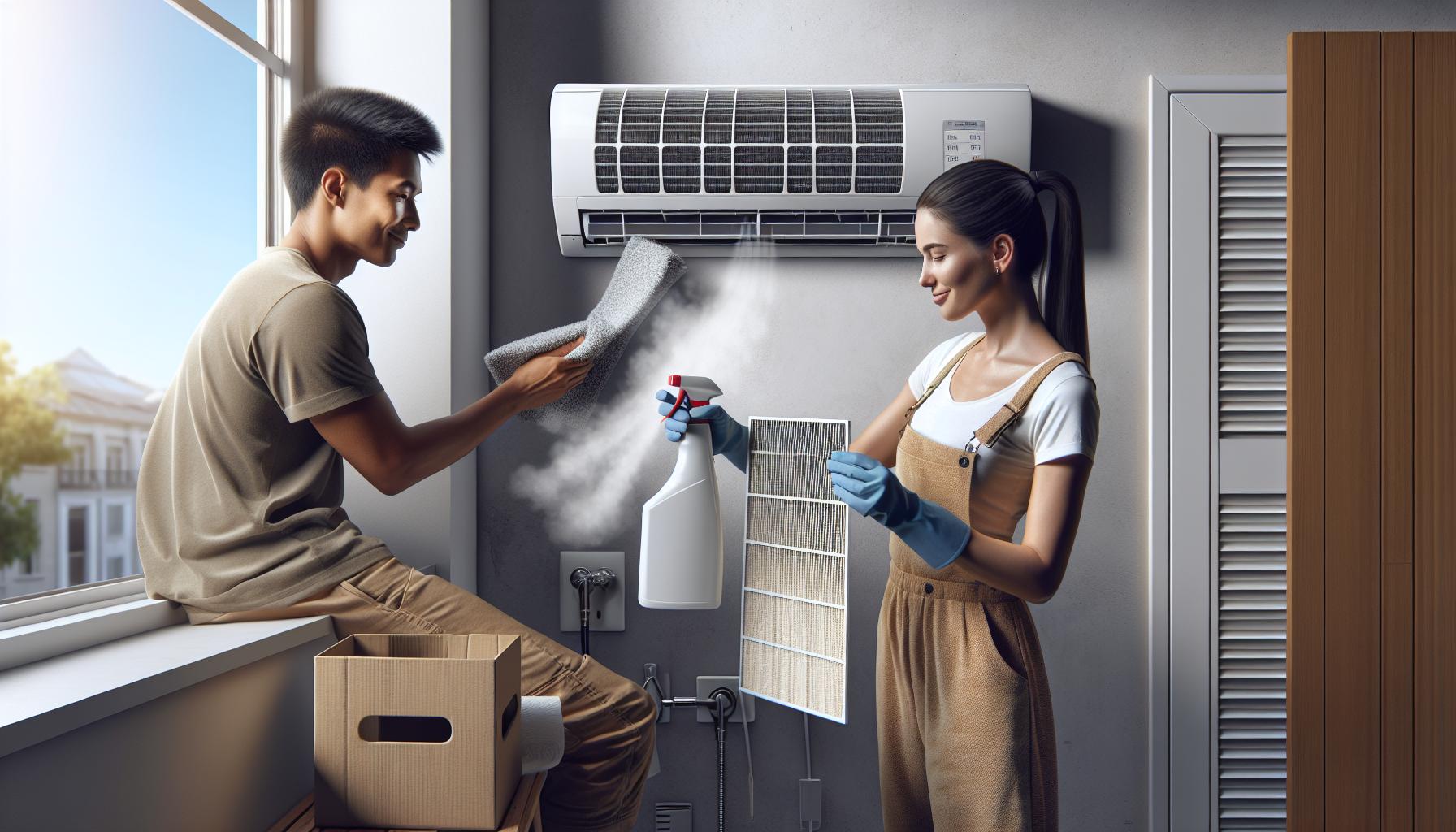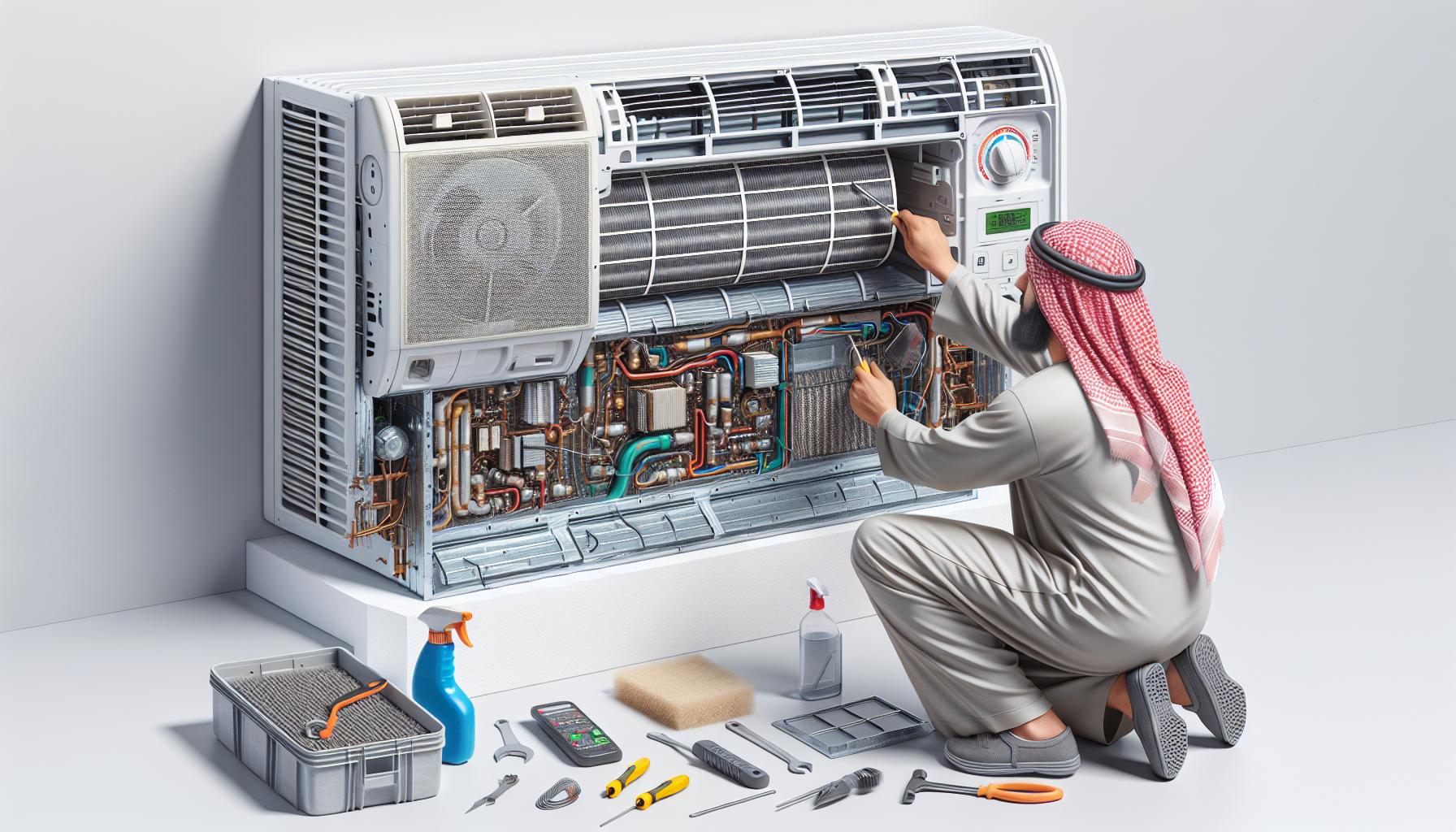The Role of Air Ducts in Home Heating and Cooling
Air ducts play a vital role in the heating, ventilation, and air conditioning (HVAC) system of your home. Their primary function is to circulate air from the HVAC system throughout the house. Understanding how these ducts work and how they impact the efficiency of heating and cooling systems is key to maintaining a comfortable living environment.
Understanding Air Ducts
Air ducts are a series of connected tubes that traverse the entire home, distributing warm or cool air from the HVAC system. These ducts are often made from metal, flexible plastic, or fiberglass. The size, design, and insulation of the ductwork can significantly affect the efficiency of home heating and cooling systems.
The ducts’ primary function is to transport air from the HVAC system, circulating it throughout the house and then returning it to the HVAC system. This continuous process helps maintain a consistent temperature in all areas of the home.
How Air Ducts Affect Heating and Cooling
The efficiency of an HVAC system largely depends on the condition and performance of the air ducts. When these ducts are clean and well-maintained, they allow the smooth flow of air, ensuring optimal performance of the heating and cooling system.
On the other hand, dirty or clogged air ducts can hinder the flow of air, forcing the HVAC system to work harder. This not only reduces the system’s efficiency but also results in higher energy costs and potential damage to the HVAC system.
Air ducts can also have an impact on the quality of indoor air. Over time, dust, allergens, and other pollutants can accumulate in the ducts and get circulated throughout the house. Regular air duct cleaning can help prevent this problem, improving the air quality within the home.
In addition, properly insulated and sealed air ducts can prevent heat loss during the winter and heat gain during the summer, enhancing the overall energy efficiency of the heating and cooling system.
Whether you’re planning a new ductwork installation, considering hvac system replacement, or scheduling routine hvac system cleaning, it’s important to understand the critical role that air ducts play in maintaining the comfort and efficiency of your home.
The Importance of Air Duct Cleaning
Air duct cleaning plays a crucial role in maintaining the efficiency and longevity of your home’s heating and cooling system. In this section, we will delve into how air ducts get dirty and the impact this can have on your home’s heating and cooling.
How Air Ducts Get Dirty
Air ducts serve as the respiratory system of your home’s heating and cooling system, circulating warm or cool air throughout your residence. Over time, these ducts can accumulate dust, pet dander, pollen, and other airborne particles that can impede the system’s performance.
Here are some of the common sources of duct contamination:
- Indoor Air Pollutants: Everyday household activities, such as cleaning, cooking, or even moving around, can generate particles that get sucked into the ductwork. These include dust, pet dander, smoke, and other airborne particles.
- Outdoor Air Pollutants: Outdoor air entering your home can bring in additional contaminants, such as pollen, mold spores, and dust.
- System Components: Over time, the various components of your HVAC system can produce particles that contribute to duct contamination. For example, the accumulation of dust on HVAC filters can break down and enter the air ducts.
- Renovation and Construction Work: Construction activities can generate a significant amount of dust and debris that can easily enter your air ducts, especially if the ducts are not properly sealed during the work.
Impact of Dirty Air Ducts on Home Heating and Cooling
Dirty air ducts can have a significant impact on the efficiency of your home heating and cooling system. Here are some of the potential consequences:
- Reduced Airflow: Accumulated debris in your air ducts can obstruct airflow, forcing your system to work harder to maintain the desired temperature. This can lead to increased energy usage and higher utility bills.
- Poor Indoor Air Quality: Dirty air ducts can circulate contaminants throughout your home, potentially affecting indoor air quality. This can be particularly problematic for individuals with allergies or respiratory conditions.
- System Wear and Tear: As your system works harder to compensate for reduced airflow, it can accelerate wear and tear on its components. This can lead to more frequent breakdowns and potentially shorten the lifespan of your system.
Regular air duct cleaning is a preventative measure that can help maintain the efficiency of your heating and cooling system, improve indoor air quality, and extend the lifespan of your system. It’s a critical aspect of home maintenance that should not be overlooked. For more information on maintaining your HVAC system, check out our hvac maintenance checklist.
Benefits of Air Duct Cleaning
Maintaining a clean air duct system brings with it an array of benefits. Understanding the advantages of air duct cleaning can help homeowners prioritize this often overlooked aspect of home maintenance.
Improved Air Quality
One of the most significant benefits of air duct cleaning is the improvement in indoor air quality. Over time, dust, allergens, and other pollutants can accumulate in the air ducts. When the HVAC system operates, these particles are dispersed into the indoor air. Regular air duct cleaning reduces the amount of these pollutants, leading to cleaner and healthier air in the home. This can be particularly beneficial for people with allergies or respiratory conditions. For further improvement of indoor air quality, homeowners may also consider air purifiers for home.
Enhanced System Efficiency
A clean air duct system allows for unobstructed airflow, which is vital for the efficiency of your HVAC system. When dust and debris build up in the air ducts, the HVAC system has to work harder to heat or cool the home. This not only increases energy consumption but can also lead to wear and tear on the system components. Regular air duct cleaning can lead to enhanced system efficiency, reducing energy costs and preventing costly air conditioning repair.
Extended HVAC System Life
Regular maintenance, including air duct cleaning, can extend the life of an HVAC system. A system that runs efficiently is less likely to break down and require expensive repairs or replacement. Given the significant cost associated with HVAC system replacement, preventative maintenance such as air duct cleaning represents a worthwhile investment. For a comprehensive care routine, homeowners may refer to our HVAC maintenance checklist.
In conclusion, regular air duct cleaning offers several benefits, from improving air quality to enhancing system efficiency and extending the lifespan of the HVAC system. Homeowners are encouraged to add air duct cleaning to their regular home maintenance tasks to enjoy a more comfortable and healthy living environment.
Signs Your Air Ducts Need Cleaning
Regular air duct cleaning plays a vital role in maintaining the efficiency of your HVAC system and ensuring good indoor air quality. However, knowing when to schedule a professional cleaning can be tricky. Below are some signs that your air ducts may need cleaning.
Visible Dust and Debris
One of the most apparent signs that your air ducts need cleaning is the presence of visible dust and debris around the vent covers. This dust accumulation can indicate that your air ducts are clogged with dust, pet dander, and other airborne particles that can negatively impact your indoor air quality and the efficiency of your HVAC system.
Unusual Smells
Unusual or musty smells coming from your HVAC system can also indicate the need for air duct cleaning. These odors can be caused by the accumulation of mold, mildew, or other contaminants within the air ducts. If you notice a persistent unpleasant smell whenever you run your HVAC system, it may be time to schedule a professional air duct cleaning.
Increasing Energy Bills
If you notice a sudden increase in your energy bills, it could be a sign that your HVAC system is working harder than it should be. This could be due to dirty air ducts causing the system to strain to maintain the desired indoor temperature. A professional air duct cleaning can help improve the efficiency of your HVAC system and potentially reduce your energy costs.
| Sign | Possible Cause | Solution |
|---|---|---|
| Visible dust and debris | Clogged air ducts | Air duct cleaning |
| Unusual smells | Mold/mildew in air ducts | Air duct cleaning |
| Increasing energy bills | HVAC system strain due to dirty air ducts | Air duct cleaning |
Remember, regular air duct cleaning can help ensure the optimal performance of your HVAC system, extend its lifespan, and improve your indoor air quality. For more information on maintaining your HVAC system, check out our HVAC maintenance checklist.
The Air Duct Cleaning Process
Understanding the air duct cleaning process can help homeowners appreciate the work involved and the importance of this often-overlooked aspect of home heating and cooling maintenance. The process typically involves three main stages: the inspection stage, the cleaning stage, and post-cleaning considerations.
The Inspection Stage
The first step in the air duct cleaning process is a thorough inspection of the duct system. This involves checking the ductwork for accumulated dust, debris, and any signs of mold or vermin infestations. Special cameras may be used to view hard-to-reach areas of the duct system.
The inspection also includes assessing the overall condition of the ductwork, looking for any leaks, corrosion, or other damage that might affect the efficiency of the HVAC system. If any issues are detected, it may be necessary to consider hvac duct sealing or ductwork installation services.
The Cleaning Stage
Once the inspection is complete, the actual cleaning of the air ducts can commence. This involves using specialized equipment, such as high-powered vacuums, brushes, and blowers, to remove the dust and debris from the ducts.
During the cleaning process, all components of the HVAC system, including the supply and return air ducts, registers, grills, diffusers, heat exchangers, and cooling coils, are thoroughly cleaned.
After cleaning, an antimicrobial agent may be applied to the interior surfaces of the ducts to eliminate any remaining bacteria or mold. However, this is typically only done when there is substantial evidence of microbial contamination.
Post-Cleaning Considerations
After the cleaning process, a final inspection is performed to ensure that all areas of the duct system have been adequately cleaned and that there are no remaining contaminants.
Post-cleaning, it’s important to maintain the cleanliness of your air ducts through regular HVAC maintenance, including changing hvac filters and scheduling annual professional inspections. This helps ensure the longevity and efficiency of your HVAC system.
Additionally, homeowners should consider implementing other measures to improve their home’s indoor air quality, such as using air purifiers for home or ensuring proper hvac ventilation.
In conclusion, air duct cleaning is a crucial aspect of maintaining a healthy and efficient home heating and cooling system. By understanding the cleaning process and implementing regular HVAC maintenance practices, homeowners can enjoy improved indoor air quality and potentially lower energy bills. For more tips on maintaining your HVAC system, check out our hvac maintenance checklist.
Related Posts:
- Understanding Central Heating and Cooling Systems…
- The Importance of HVAC Duct Sealing for Efficient…
- Understanding HVAC Ventilation: A Guide for Homeowners
- Understanding HVAC Duct Insulation: A Guide for Homeowners
- Understanding HVAC Ductwork Design for Efficient…
- Understanding Home Heating and Cooling Systems




